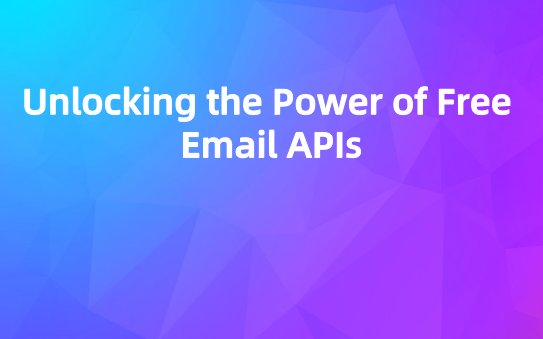Unlocking the Power of Free Email APIs: What Are They and How to Deploy Them?
Deploying a free email API like SendGrid enhances your application's communication capabilities.
In today's digital landscape, seamless communication is paramount for both developers and businesses. Email APIs have become essential tools, enabling quick and efficient email delivery directly from applications. Whether you're managing transactional emails, marketing campaigns, or notifications, free email APIs offer robust solutions at no cost. This article delves into the best free email APIs, their features, use cases, and comprehensive deployment steps across various programming languages.

Understanding Free Email APIs
Email APIs empower developers to send and receive emails programmatically. They come packed with features, from basic email delivery to advanced analytics, tracking, and template management. Leveraging a free email API can save time, cut costs, and enhance application communication reliably and efficiently.
Why Should You Use an Email API?
Utilizing an email API brings several superior benefits over traditional email methods:
- Reliability: Designed to handle high volumes and ensure email deliverability.
- Scalability: Easily scale email sending as your user base grows.
- Analytics: Detailed metrics including open rates, click rates, and more.
- Automation: Automate processes like welcome emails, password resets, and notifications.
- Customization: Support for HTML and templating languages enables highly personalized emails.
Top Free Email APIs for Developers
1. SendGrid
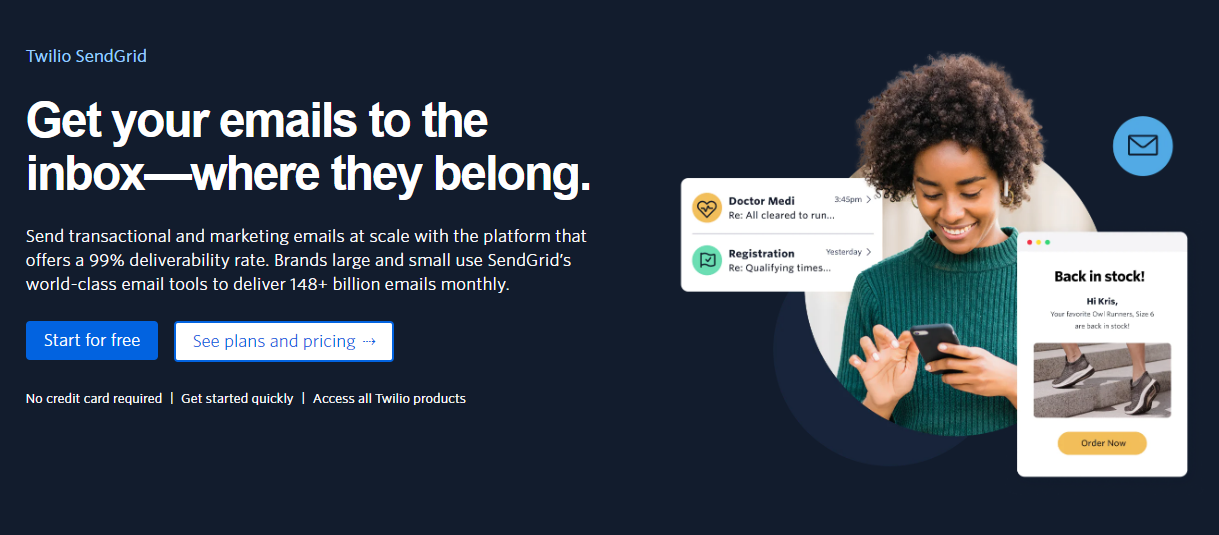
- Website: SendGrid
- Features:
- Free tier includes 100 emails/day.
- Supports SMTP and RESTful APIs.
- Comprehensive analytics and tracking.
- Easy template and dynamic content management.
- Broad platform and language integration.
- Use Cases:
- Transactional emails (e.g., order confirmations, password resets).
- Marketing campaigns and newsletters.
- Notifications and alerts.
2. Mailgun
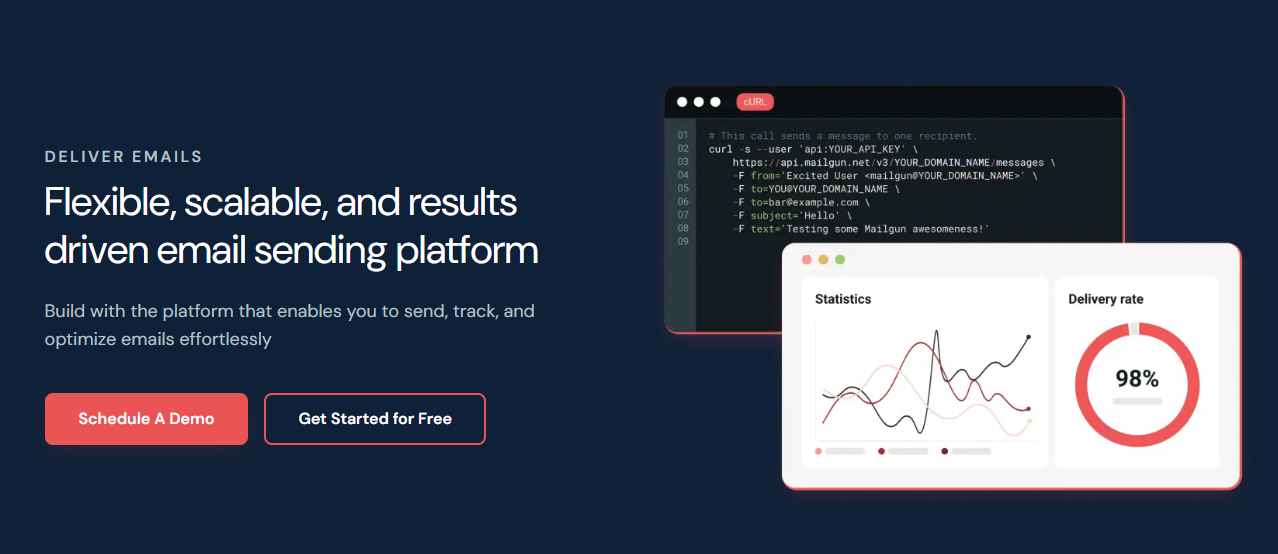
- Website: Mailgun
- Features:
- Free tier includes 5,000 emails/month for the first 3 months.
- Supports SMTP and HTTP.
- Email validation and verification.
- In-depth analytics and reporting.
- Use Cases:
- Transactional emails and notifications.
- Email marketing campaigns.
- Email address validation.
3. Postmark
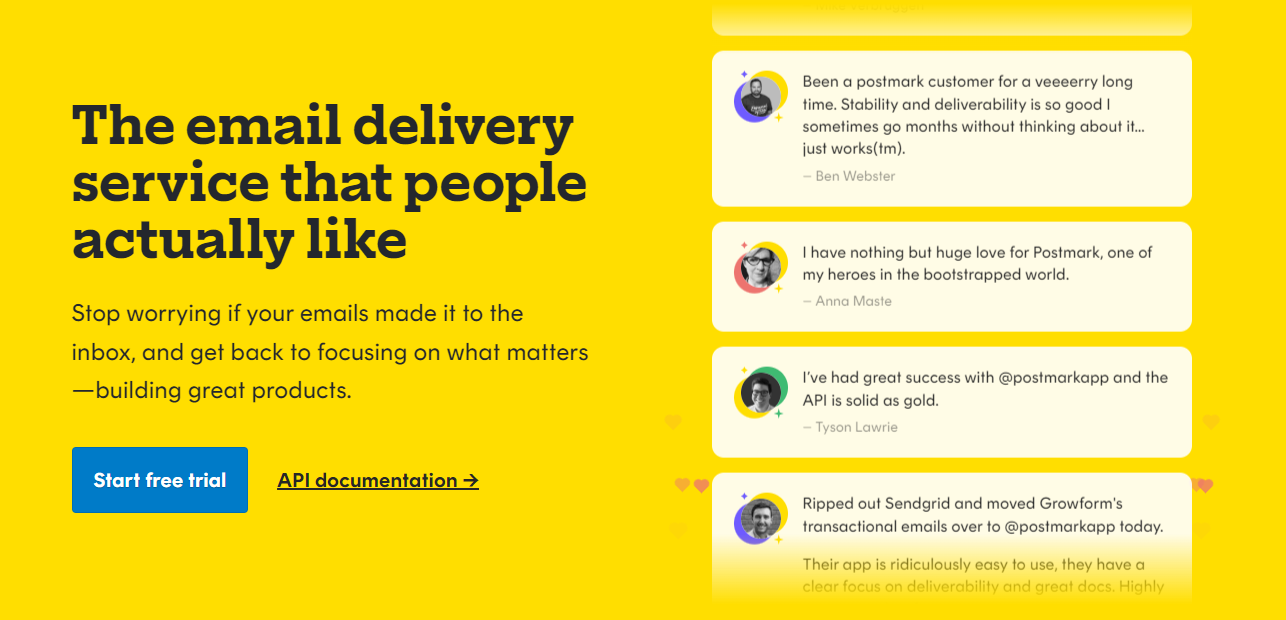
- Website: Postmark
- Features:
- Free tier includes 100 emails/month.
- Focus on high deliverability for transactional emails.
- Real-time tracking and analytics.
- Use Cases:
- Transactional emails such as receipts and notifications.
- User onboarding emails.
- Real-time email monitoring.
4. Mailjet
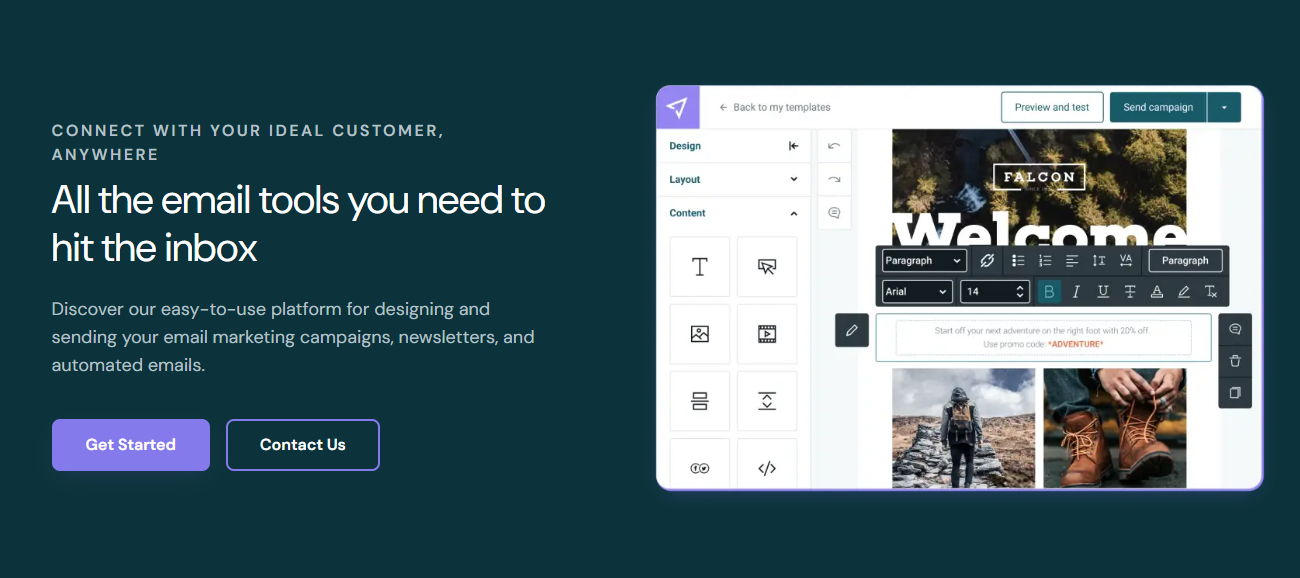
- Website: Mailjet
- Features:
- Free tier includes 6,000 emails/month (200 emails/day).
- Supports SMTP and HTTP.
- Advanced analytics and A/B testing.
- Use Cases:
- Marketing emails and newsletters.
- Transactional emails.
- Email analytics.
5. Sendinblue
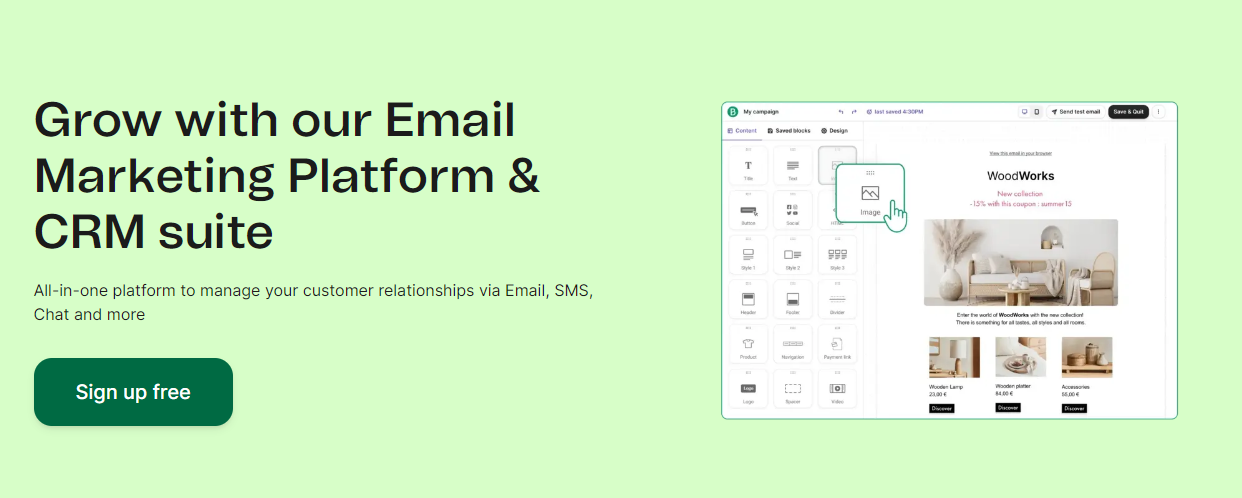
- Website: Sendinblue
- Features:
- Free tier includes 300 emails/day.
- Comprehensive support for SMTP and HTTP.
- Advanced marketing automation.
- Use Cases:
- Marketing campaigns.
- Transactional emails.
- Customer engagement.
6. Amazon SES (Simple Email Service)

- Website: Amazon SES
- Features:
- Free tier includes 62,000 emails/month from Amazon EC2.
- Highly scalable and reliable.
- Detailed analytics and feedback.
- Integrates with other AWS services.
- Use Cases:
- Large-scale email campaigns.
- Transactional emails.
- AWS integration.
7. Pepipost
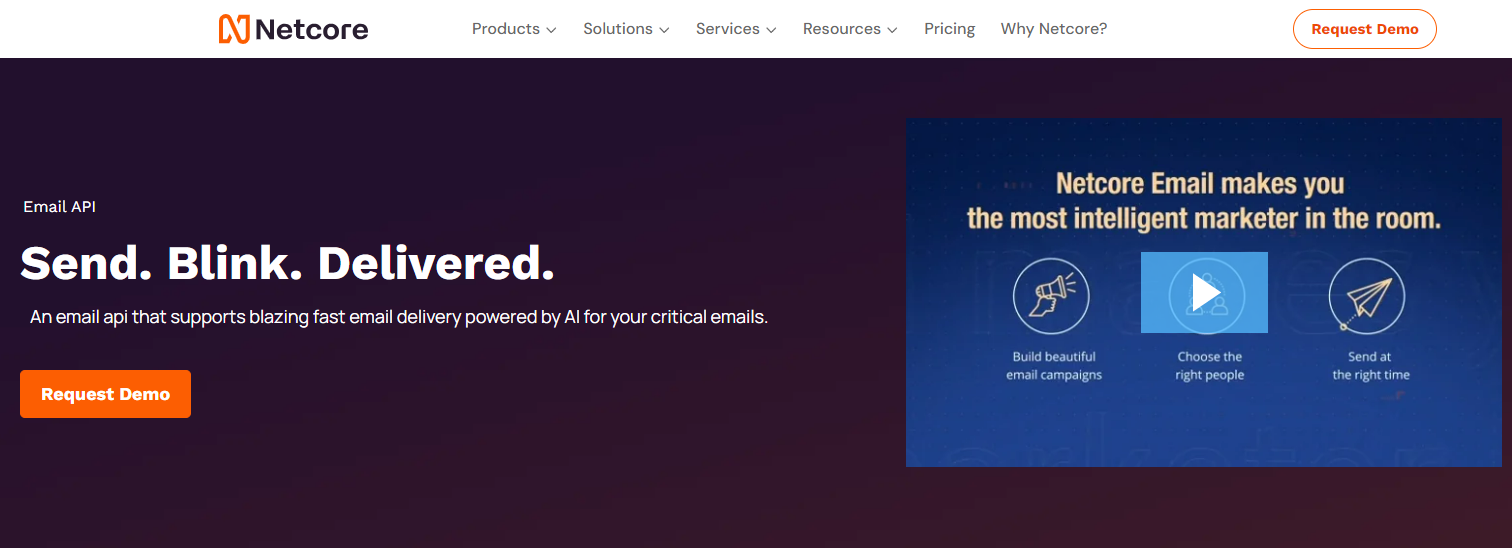
- Website: Pepipost
- Features:
- Free tier includes 30,000 emails in the first 30 days, then 100 emails/day.
- Real-time analytics.
- Use Cases:
- Transactional emails.
- Marketing campaigns.
- Real-time tracking.
8. Elastic Email
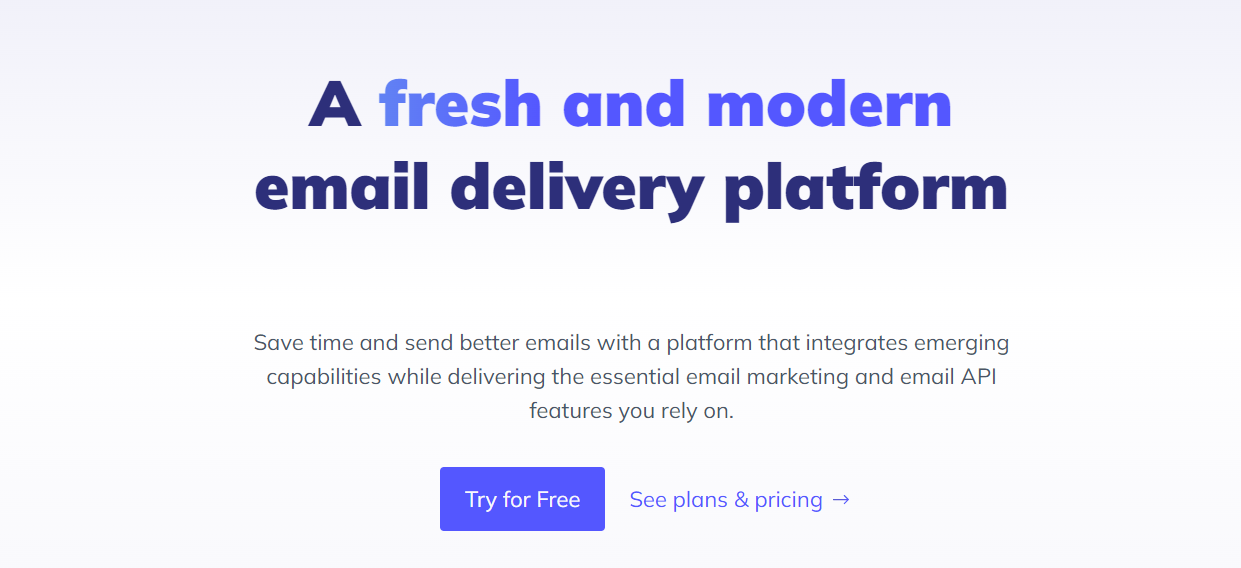
- Website: Elastic Email
- Features:
- Free tier includes 100 emails/day.
- Rich analytics and reporting.
- Use Cases:
- Marketing emails.
- Transactional emails.
- Email automation.
9. Moosend
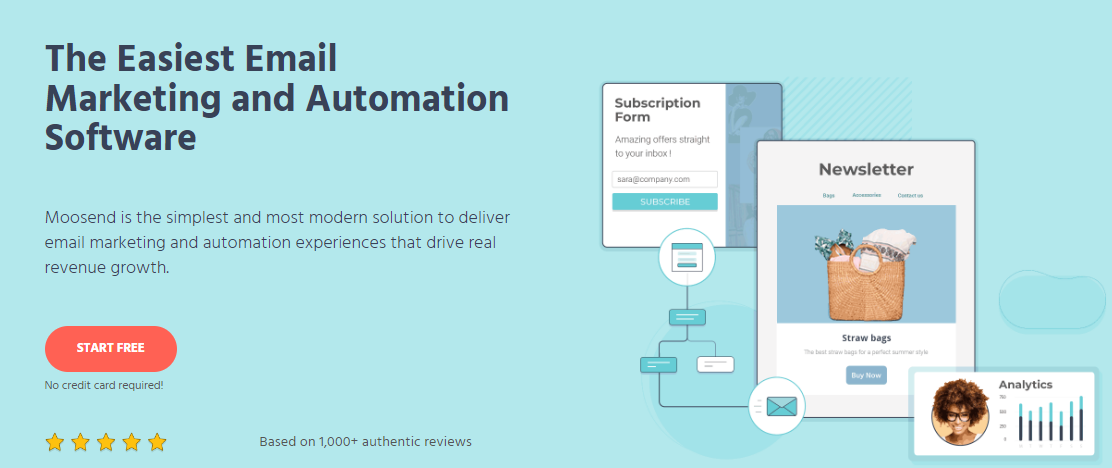
- Website: Moosend
- Features:
- Free tier includes unlimited emails for up to 1,000 subscribers.
- Detailed analytics and segmentation.
- Use Cases:
- Marketing campaigns.
- Transactional emails.
- Customer engagement.
10. SparkPost
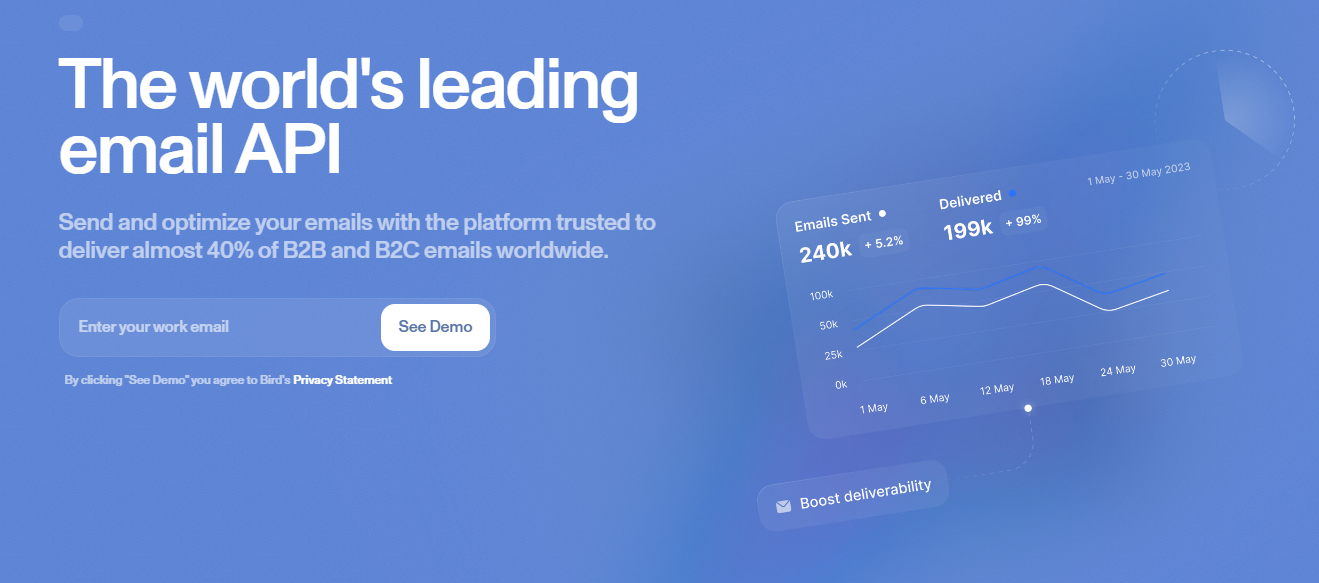
- Website: SparkPost
- Features:
- Free tier includes 100 emails/day.
- Advanced tracking and analytics.
- Use Cases:
- Transactional emails.
- Marketing campaigns.
- Real-time reporting.
How to Deploy a Free Email API into Your Application
Integrating a free email API can drastically improve your app’s communication efficiency. Here, we’ll demonstrate with SendGrid for both Node.js and Python applications, adaptable to other APIs as well.
Step 1: Sign Up and Obtain an API Key
- Select an API Service: For this guide, we’ll use SendGrid.
- Sign Up: Create an account on the SendGrid website and get your API key.
Step 2: Configure Your API Key
- Generate API Key: In the SendGrid dashboard, navigate to the API Keys section, create a key with appropriate permissions, and copy it for use.
Step 3: Integrate the API with Your Application
For a Node.js Application:
Run Script:
node sendEmail.js
Configure and Send Email:
const sgMail = require('@sendgrid/mail');
sgMail.setApiKey('YOUR_SENDGRID_API_KEY');
const sendEmail = async (to, subject, text) => {
const msg = {
to,
from: 'your-email@example.com',
subject,
text,
html: `<strong>${text}</strong>`,
};
try {
await sgMail.send(msg);
console.log('Email sent');
} catch (error) {
console.error('Error sending email:', error);
}
};
// Example usage:
sendEmail('recipient@example.com', 'Test Subject', 'This is a test email.');
Install SendGrid Library:
npm install --save @sendgrid/mail
For a Python Application:
Run Script:
python send_email.py
Configure and Send Email:
import sendgrid
from sendgrid.helpers.mail import Mail, Email, To, Content
sg = sendgrid.SendGridAPIClient(api_key='YOUR_SENDGRID_API_KEY')
def send_email(to_email, subject, body):
from_email = Email("your-email@example.com")
to_email = To(to_email)
content = Content("text/plain", body)
mail = Mail(from_email, to_email, subject, content)
try:
response = sg.send(mail)
print("Email sent")
except Exception as e:
print("Error sending email:", e)
# Example usage:
send_email("recipient@example.com", "Test Subject", "This is a test email.")
Install SendGrid Library:
pip install sendgrid
Additional Configurations
- Verify Your Sender Email: Improve deliverability by verifying your sender email or domain.
- Handle Bounces and Unsubscribes: Use webhooks or API features for managing bounces and unsubscribe requests.
- Use Templates: Utilize email templates for consistency.
Test and Monitor Your Integration
- Send Test Emails: Verify your setup by sending test emails.
- Monitor: Track deliverability and engagement using analytics tools.
- Log Errors: Implement error handling to manage issues effectively.
Using EchoAPI for Efficient Email API Deployment
EchoAPI is an excellent platform for developing and testing APIs, streamlining email API deployment.
Steps to Integrate Postmark with EchoAPI:
1. Obtain Postmark API Token:
Sign up and navigate to the "Server" tab to get your "API Token".
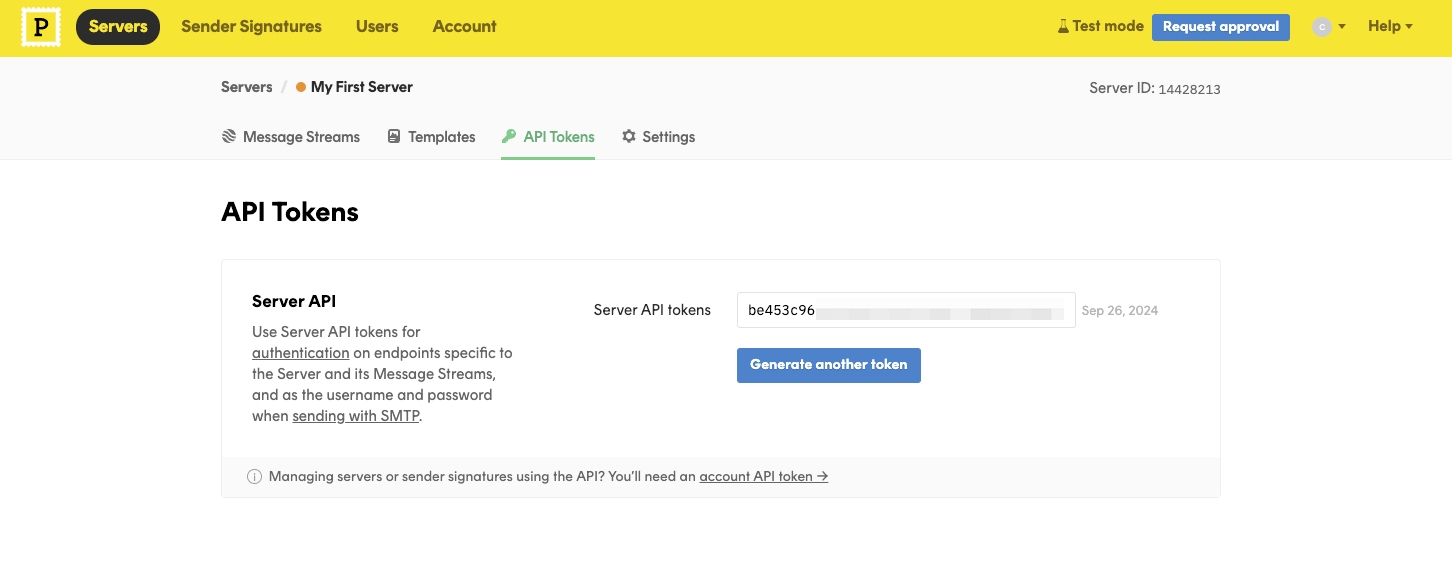
2. Create a New Project:
- Name it, e.g., "Email API Project".
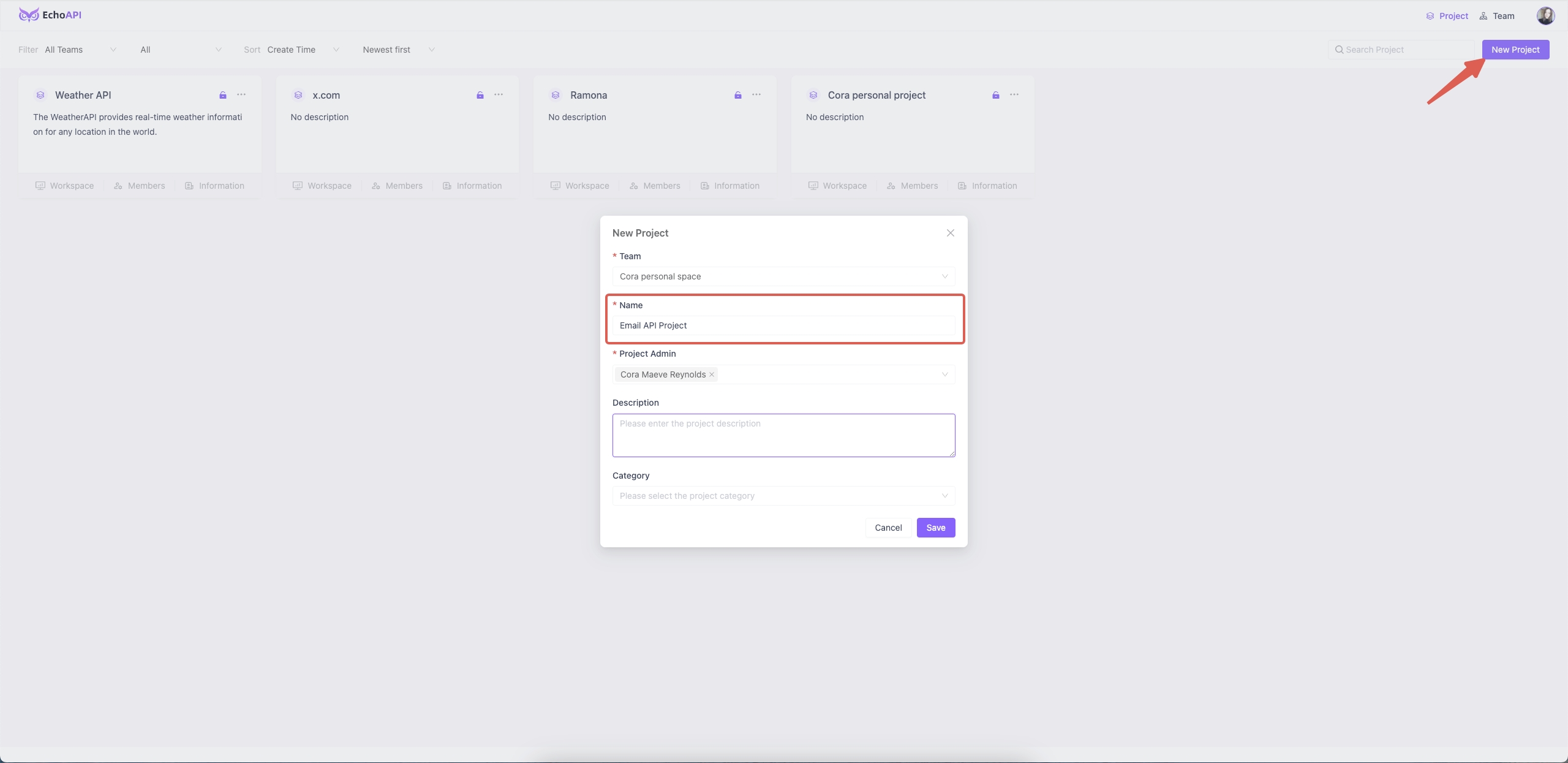
3. Define Email API Endpoints:
- Copy "Example request with curl" from Postmark docs.
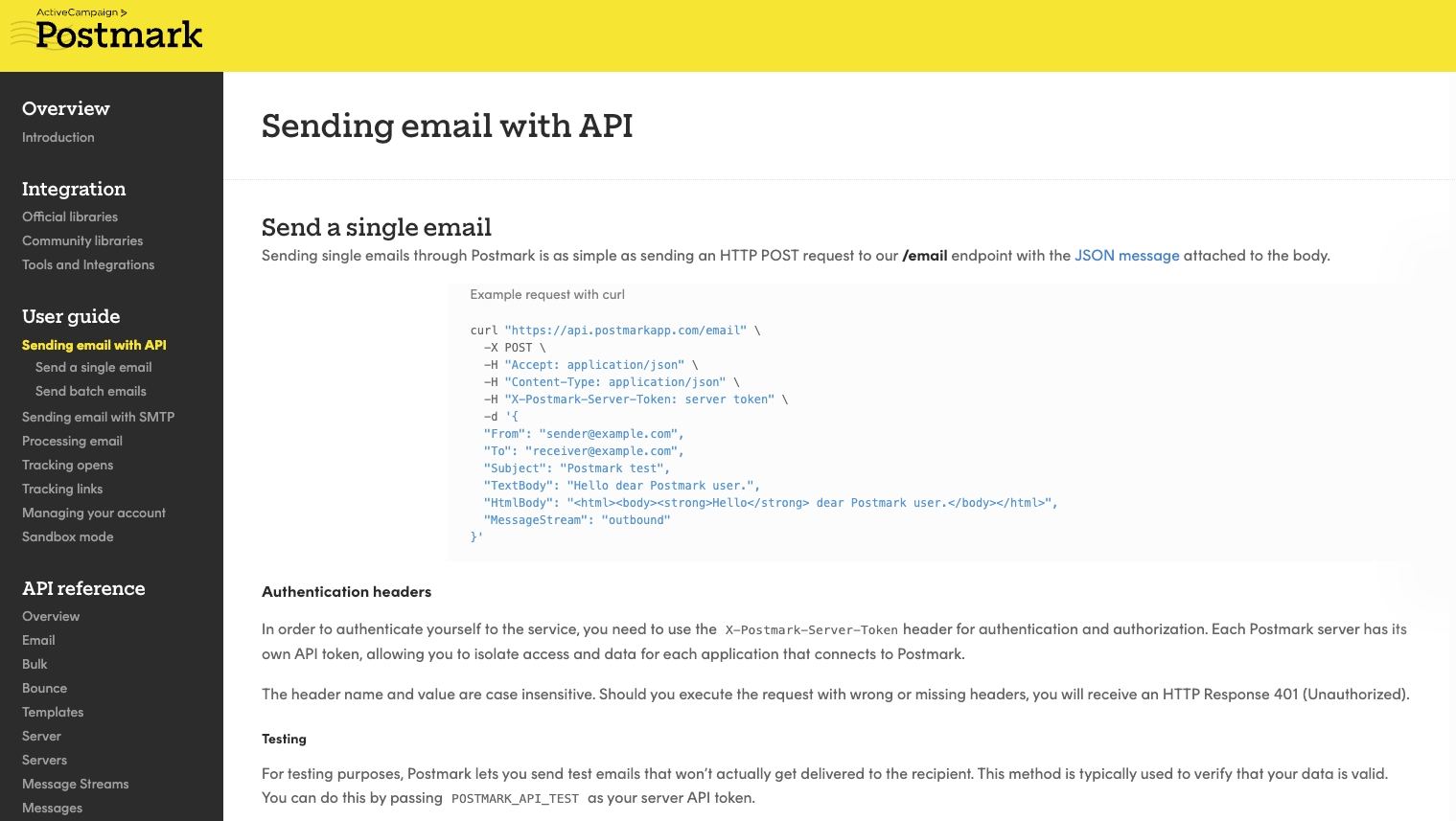
- Create a new API request in EchoAPI using this curl.
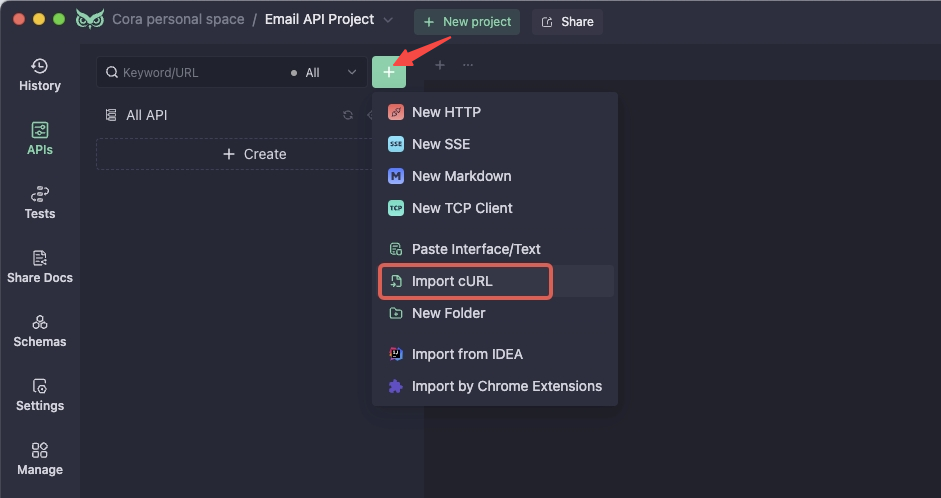
- Fill the X-Postmark-Server-Token with the token you got from step 1.
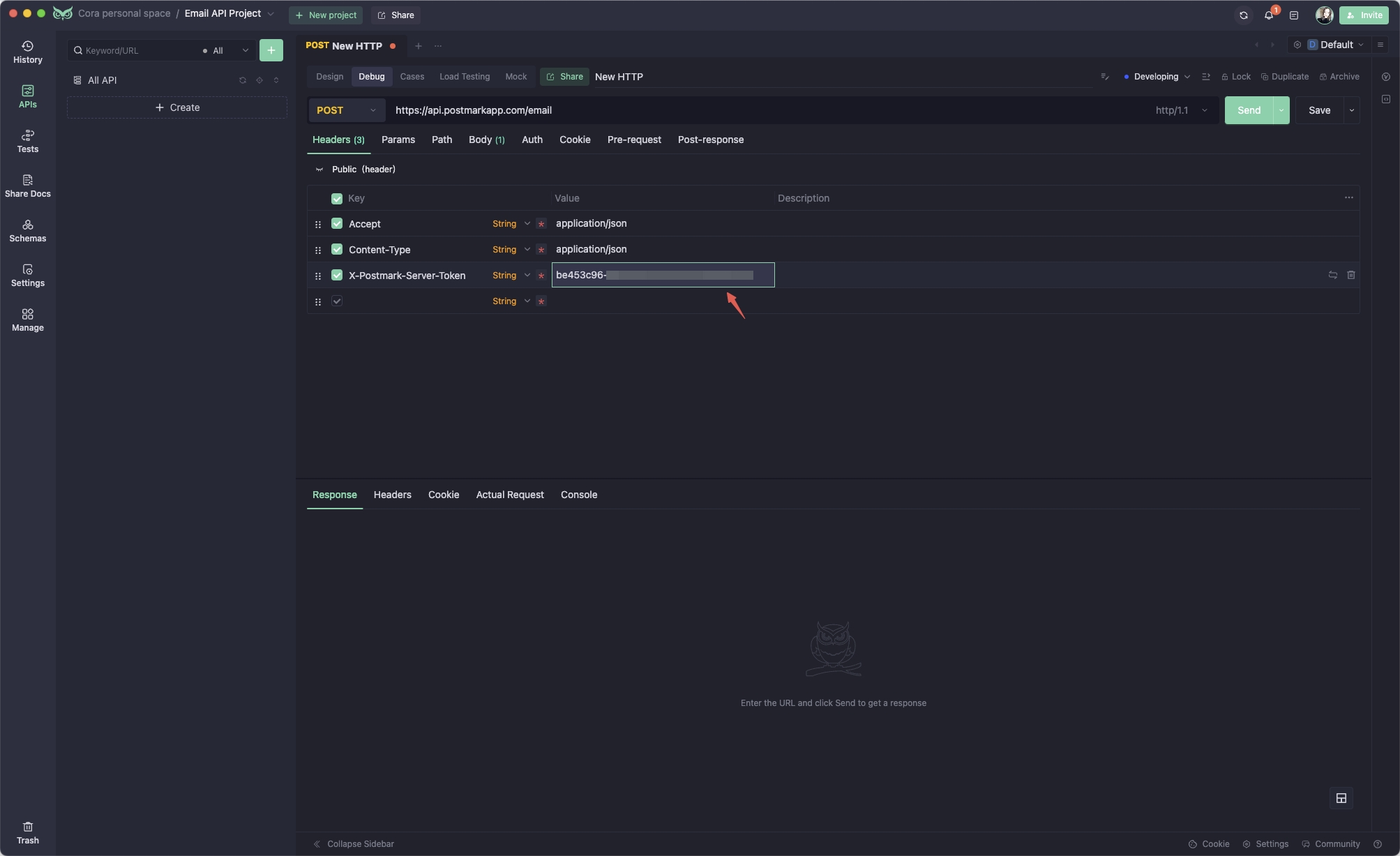
- Specify the request body by filling in "from" and "to" email.
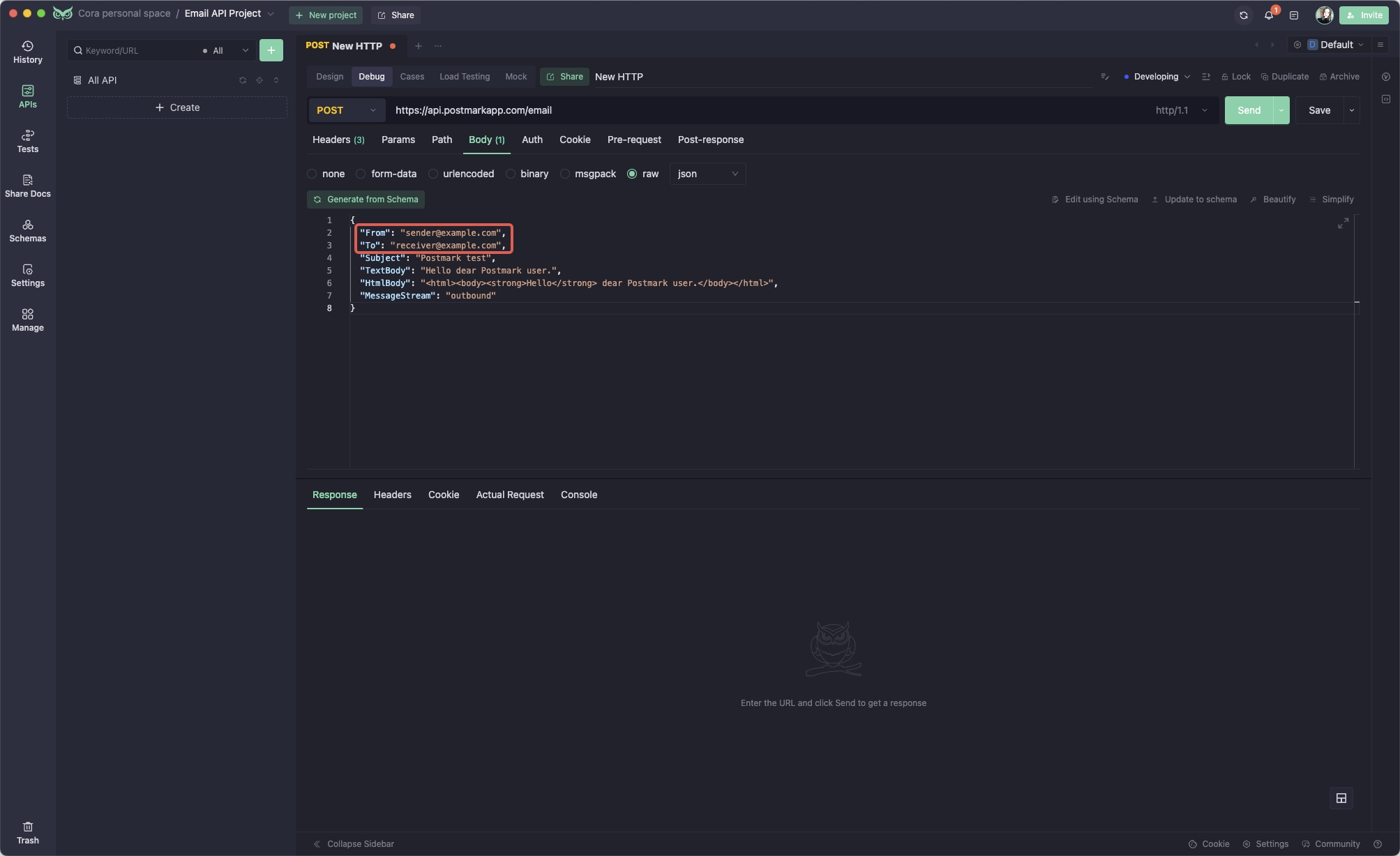
4. Test Email API:
- Send the request and verify the response.
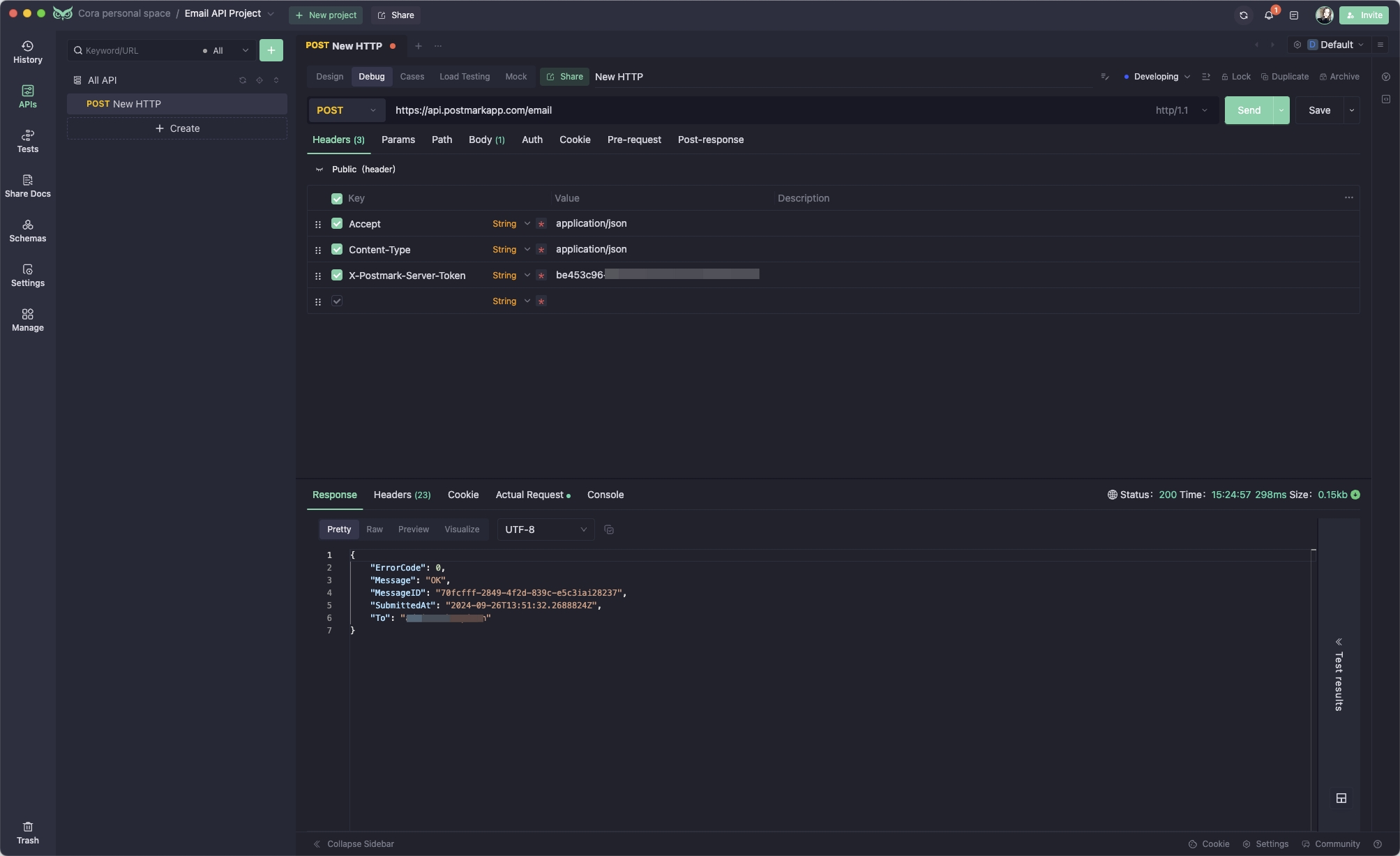
5. Deploy API:
- Save and generate out-of-box code for integration.
Conclusion
Deploying a free email API like SendGrid enhances your application's communication capabilities. Platforms like EchoAPI further simplify the process, providing a robust environment for API design, testing, and deployment. By following these steps, you can efficiently integrate and deploy an email API, irrespective of your programming language or framework.









 EchoAPI for VS Code
EchoAPI for VS Code

 EchoAPI for IntelliJ IDEA
EchoAPI for IntelliJ IDEA

 EchoAPl-Interceptor
EchoAPl-Interceptor

 EchoAPl CLI
EchoAPl CLI
 EchoAPI Client
EchoAPI Client API Design
API Design
 API Debug
API Debug
 API Documentation
API Documentation
 Mock Server
Mock Server




